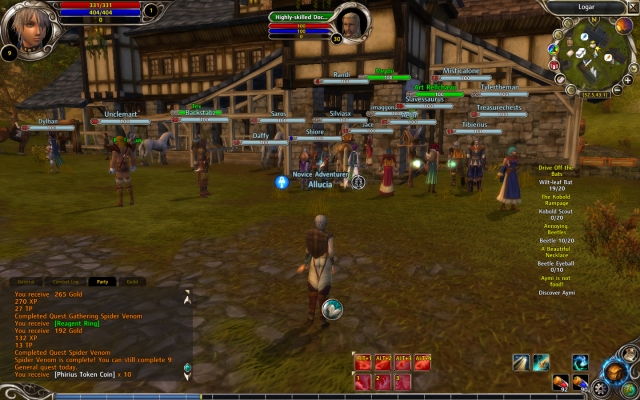
Free-to-play MMORPGs have a decidedly bad reputation that is, for the most part, well-deserved. Most free-to-play games lack solid production values, technical competence, and an overall sense of design; most fall to the wayside for all but the most frugal of online gamers.
Though games like Maple Story have proven to be quite successful, overcoming some of the challenges and stigma inherent in free-to-play gaming, they still tend to be a bit shallow and too reliant on the grind, a grind which is more often than not best triumphed over by spending real money. Surprisingly, though, a new contender called Runes of Magic has launched in a crowded genre and separated itself from the pack by truly challenging the well-established prejudice towards free-to-play games.
In just the few days since the game's launch late last week, Runes of Magic has already proven itself to be a shockingly well-crafted diversion from mainstream, subscription-based MMOs. And while it may thrive only as a diversion in the long run, the game does enough right to be worth a serious look from anyone who fancies themselves an MMO player.
Admittedly, part of the game's appeal is that its core design is ripped right from the pages of the biggest players in the mainstream MMO market. To say that Runes of Magic borrows heavily from World of Warcraft would be a gross understatement; this game is almost a direct carbon copy of Blizzard's in so many transparent ways that the legally-inclined will wonder whether it will be hours or days before the infringement lawsuit pops up.
The art-over-tech visual design, questing and its associated iconography, archetypes, and tracking systems, player-versus-player dueling, guild structure and organization, drag-and-drop, recipe-based crafting, daily repeatable quests, even the complete UI and all its intricacies—all of this has been taken directly from WoW. The screenshots should make that abundantly clear. The game even adopts a lot of the better community add-ons that have come to WoW over the years, including most prominently the "Gatherer" add-on for tracking farming resources on the mini-map.
Were it only a WoW clone, though, Runes of Magic would have little to offer. The game has only one playable race and six cookie-cutter player classes (knight, warrior, rogue, mage, priest, and scout). There are only a handful of areas in the entire game, a dozen instances, and twenty or so skills per class. The game's entire presentation is a bit rough around the edges. In short, there are a number of reasons why Runes of Magic could have been little more than a deficient clone.
What makes Runes of Magic strangely compelling, though, is the way in which it takes WoW and flavors it with some of the best design elements from other big games in the genre.
Take, for example, the fact that Runes of Magic draws on the job system from Final Fantasy XI. Players pick a primary job and a secondary job which factor into the overall abilities of their characters. While a standalone knight may make for a strong tank, combining a knight with the priest class effectively gives you a more capable paladin. As was true of Final Fantasy XI, both jobs must be leveled up independently, and the secondary job's level is limited by the primary job's level. But, as in the case of Square-Enix's title, this makes character customization and progression much more interesting.
reader comments
13